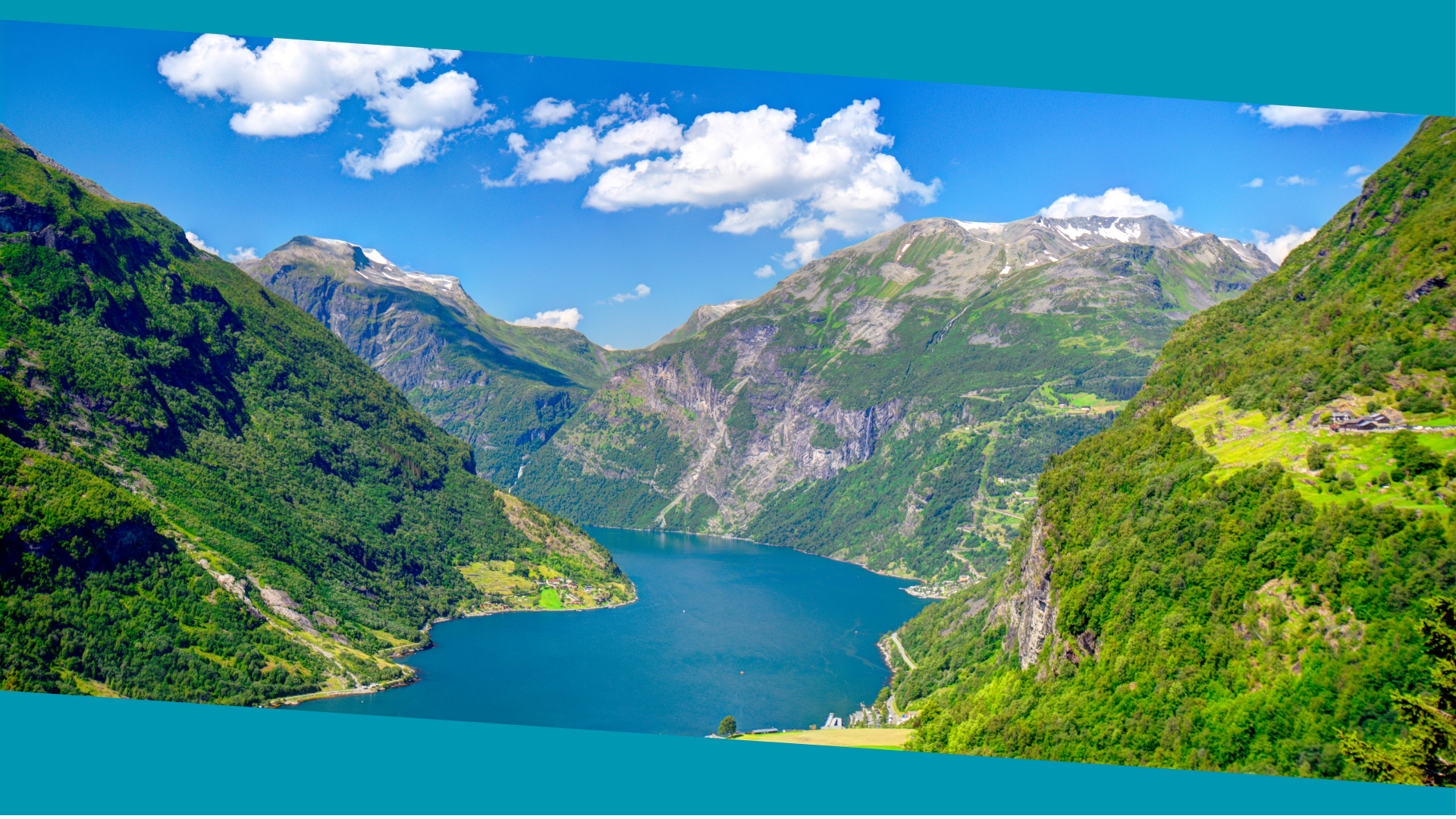
Norway Weather Forecast & Seasonal Guide
Are you planning a trip to Norway and wondering what the weather will be like? Can the weather in Norway really be as unpredictable as they say? Let’s uncover the truth about the weather conditions in this stunning Scandinavian country and how it can impact your travel plans.
Table of Contents
ToggleKey Takeaways:
- Get an overview of the weather in Norway and its unique climate patterns.
- Stay informed about the current weather conditions and forecast to plan your activities.
- Discover the best time to visit based on the expected weather conditions.
- Learn about weather highlights, such as witnessing the Northern Lights.
- Make the most of your trip by understanding the climate and temperatures throughout the year.
Norway Weather Today
Stay up-to-date with the current weather conditions in Norway. Here, you will find the latest updates on temperature, precipitation, wind speed, and any severe weather warnings.
Knowing the Norway weather today is essential for planning your day and making informed decisions about outdoor activities. Whether you are exploring the stunning fjords, hiking in the picturesque mountains, or simply strolling through the charming streets of Oslo, having accurate and up-to-date weather information ensures an enjoyable and safe experience.
Temperature
The temperature plays a crucial role in determining what to wear and how to prepare for your day in Norway. With the fluctuating climate of the country, it’s important to check the current temperature to ensure you are dressed appropriately. From the refreshing coolness of the summer to the crisp coldness of the winter, Norway’s temperature can vary significantly throughout the year.
Precipitation
Precipitation levels in Norway can vary greatly depending on the region and time of year. Rain, snow, or a combination of both can be expected, so it’s wise to be prepared with appropriate clothing and gear. Keep an eye on the precipitation forecast to plan your outdoor activities accordingly and avoid any unexpected surprises.
Wind Speed
Wind can have a significant impact on your outdoor adventures in Norway. Higher wind speeds can make temperatures feel even colder and affect your comfort level. It’s essential to stay informed about the wind speed to ensure you are adequately prepared and adjust your plans accordingly, especially if you are engaging in activities such as sailing, skiing, or hiking in exposed areas.
Severe Weather Warnings
Norwegian weather can be unpredictable at times, and severe weather events are not uncommon. Pay close attention to any severe weather warnings issued by local authorities or meteorological services. These warnings will alert you to potential hazards such as storms, high waves, heavy snowfall, or extreme temperatures so that you can take necessary precautions and ensure your safety.
By staying informed about the Norway weather today, you can maximize your enjoyment of this beautiful country and make the most of all the incredible experiences it has to offer. Whether you’re planning a hiking adventure, a visit to a historic site, or simply want to enjoy the natural beauty, being prepared and aware of the current weather conditions will enhance your trip.
Norway Climate and Average Temperatures
When planning a trip to Norway, it’s important to have an understanding of the climate patterns in the country and the average temperatures throughout the year. Norway experiences a diverse range of climates due to its geographical location and topography, resulting in varying weather conditions across different regions.
The Coastal Regions
The coastal regions of Norway, including cities like Bergen and Tromsø, have a relatively mild climate compared to other parts of the country. The Gulf Stream provides a moderating effect, keeping temperatures relatively stable throughout the year. Summers are usually cool, with average temperatures ranging from 10°C to 20°C (50°F to 68°F), while winters are mild, with temperatures typically ranging from 0°C to 5°C (32°F to 41°F). These coastal areas also receive significant rainfall throughout the year, so don’t forget to pack your raincoat!
The Inland Regions
The inland regions of Norway, such as Oslo and Trondheim, experience a more continental climate. Summers are warmer compared to the coastal areas, with average temperatures ranging from 15°C to 25°C (59°F to 77°F). Winters, on the other hand, are colder, with temperatures often dropping below freezing. Typical winter temperatures range from -5°C to -10°C (23°F to 14°F), but they can occasionally drop even lower, so make sure to bundle up if you visit during this season.
The Northern Regions
The northernmost parts of Norway, including the city of Tromsø and the beautiful landscapes of the Arctic Circle, have a subarctic climate. Summers are short and cool, with temperatures ranging from 5°C to 15°C (41°F to 59°F). Winters are long and cold, with average temperatures ranging from -10°C to -20°C (14°F to -4°F). However, due to its proximity to the North Pole, extreme cold temperatures below -30°C (-22°F) are not uncommon in the winter months, so it’s essential to dress warmly and be prepared for the chilly conditions.
Seasonal Variations
It’s important to note that the weather in Norway can be highly unpredictable, and even during the same season, temperatures and conditions can vary greatly. The coastal areas, for example, may experience milder temperatures in the winter due to the moderating influence of the Gulf Stream. It’s always a good idea to check the weather forecast before your trip and pack accordingly, especially if you plan to participate in outdoor activities.
Average Temperatures in Select Norwegian Cities
| City | Summer (°C) | Winter (°C) |
|---|---|---|
| Oslo | 15-25 | -5 to -10 |
| Bergen | 10-20 | 0-5 |
| Tromsø | 5-15 | -10 to -20 |
These average temperature ranges give you an idea of what to expect during your visit to Norway, but always remember that weather conditions can vary. It’s advisable to check the forecast closer to your travel dates for the most accurate information about the temperatures and climate patterns in the specific regions you plan to explore.
Planning Your Trip: Norway Weather Forecast
When planning a trip to Norway, considering the weather forecast can greatly enhance your experience. By understanding the expected weather conditions, you can choose the best time to visit and engage in activities that interest you the most.
Norway is known for its diverse climate, with varying weather patterns across different regions. From the stunning fjords to the northern lights, each attraction has its own optimal weather conditions. By checking the Norway weather forecast, you can align your travel plans with the most favorable weather for your desired activities.
Seasonal Activities Guide
“The weather forecast allows visitors to plan activities like hiking, skiing, or exploring the cities and landmarks without any weather-related inconveniences or surprises.”
During the summer months, typically from June to August, Norway experiences mild temperatures and extended daylight hours. This is the perfect time to explore the vibrant cities, hike through lush forests, or cruise along the breathtaking fjords.
In contrast, the winter season from December to February offers a unique opportunity to witness the mesmerizing Northern Lights. By staying updated with the Norway weather forecast, you can plan your trip during a period with optimal chances of experiencing this natural wonder.
Outdoor Adventures and Sports
“The weather forecast informs visitors about skiing conditions, allowing them to choose the best time to hit the slopes and enjoy the winter wonderland.”
If you are an outdoor enthusiast, the weather forecast will be your guide to Norway’s vast array of adventure sports. From skiing in the snow-covered mountains to kayaking through the crystal-clear waters, understanding the weather conditions will help you make the most of your chosen activity.
City Exploration and Sightseeing
“The weather forecast allows visitors to plan outdoor city tours, maximizing their time to explore popular landmarks and attractions.”
For those interested in exploring Norway’s cities, like Oslo or Bergen, the weather forecast provides valuable insights. By checking the forecast, you can plan outdoor city tours, ensuring you have pleasant weather to discover iconic landmarks, visit museums, and immerse yourself in the local culture.
Coastal Adventures and Wildlife Encounters
“The weather forecast helps visitors plan coastal excursions and spot wildlife, guaranteeing the best conditions for unforgettable experiences.”
Norway’s coastline offers incredible opportunities to encounter wildlife, such as whales and puffins. By consulting the weather forecast, you can plan your coastal adventures accordingly, choosing the optimal time to go on boat tours or hike along the scenic coastal trails.
Remember, the weather forecast is a crucial tool to plan your trip to Norway. By staying informed about the expected weather conditions, you can make informed decisions and create memorable experiences without compromising on your desired activities.
| Month | Average Temperature (°C) | Weather Conditions |
|---|---|---|
| January | -3 | Winter Wonderland, Northern Lights |
| April | 5 | Spring Awakening, Longer Days |
| July | 18 | Warm Summer, Midnight Sun |
| October | 8 | Autumn Colors, Fjord Cruises |
Weather in Oslo, Norway
When it comes to the weather in Oslo, Norway, visitors can expect a diverse climate that varies throughout the year. Known for its stunning natural beauty and vibrant city life, Oslo offers a unique weather experience that adds to its charm.
The city experiences a temperate oceanic climate, with mild summers and cold winters. It’s important to pack accordingly and plan your activities accordingly based on the current conditions and weather forecast.
During the summer months from June to August, Oslo experiences pleasant temperatures, with an average high of around 20°C (68°F) and lows at around 12°C (54°F). This is the ideal time to explore the city’s outdoor attractions, enjoy leisurely walks along the beautiful waterfront, or indulge in a boat trip along the Oslofjord.
In contrast, winter in Oslo is cold, with temperatures ranging from -6°C (21°F) to 2°C (36°F). The city is transformed into a winter wonderland, and you can embrace the Scandinavian spirit by participating in winter activities such as skiing, ice skating, and sledding.
The transition months of spring and autumn bring milder temperatures, ranging from 5°C (41°F) to 15°C (59°F). These seasons are perfect for exploring Oslo’s parks and gardens as they come to life with blooming flowers or vibrant autumn colors.
Outdoor enthusiasts and nature lovers will appreciate Oslo’s unique weather features. The city is surrounded by mountains and forests, offering opportunities for hiking, biking, and exploring the picturesque landscapes.
To get up-to-date information about the current weather conditions and forecast in Oslo, you can use reliable weather forecast websites or mobile apps such as The Weather Channel or AccuWeather. These resources will provide you with detailed information on temperature, precipitation, wind speed, and more.
So whether you’re planning a summer adventure or a winter getaway, understanding the weather in Oslo will help you make the most of your visit to this captivating city.
| Season | Average Temperature | Weather |
|---|---|---|
| Summer (June to August) | Average high: 20°C (68°F) Average low: 12°C (54°F) |
Mild temperatures, occasional rain |
| Autumn (September to November) | Average high: 10°C (50°F) Average low: 3°C (37°F) |
Cool temperatures, increasing rainfall |
| Winter (December to February) | Average high: 2°C (36°F) Average low: -6°C (21°F) |
Cold temperatures, snowfall |
| Spring (March to May) | Average high: 11°C (52°F) Average low: 4°C (39°F) |
Mild temperatures, occasional rain |
Weather Highlights: Northern Lights in Norway
When it comes to experiencing the mesmerizing Northern Lights, Norway is the ideal destination. The country’s unique geographic location and favorable weather conditions make it one of the best places in the world to witness this awe-inspiring natural phenomenon.
The Northern Lights, also known as the Aurora Borealis, are a breathtaking display of color and light that illuminates the night sky. This celestial spectacle is caused by the interaction of charged particles from the sun with the Earth’s magnetic field. To witness this magical phenomenon, the right weather conditions are essential.
In Norway, the best time to see the Northern Lights is during the winter months from November to March. The long nights and crisp cold temperatures create the perfect atmosphere for the Aurora Borealis to shine brightly. It is worth noting that the Northern Lights are more visible in areas away from light pollution, such as remote regions or the Arctic Circle.
While the weather can impact the visibility of the Northern Lights, clear skies are crucial for an optimal viewing experience. Cloudy or overcast weather can obstruct the visibility of the Aurora Borealis. Therefore, keeping an eye on the weather forecast is important when planning a Northern Lights expedition.
“The Northern Lights are a stunning natural phenomenon that can only be experienced under the right weather conditions. Clear skies and minimal light pollution are essential to witness this magical display in all its glory.”
In addition to checking the weather forecast, it is advisable to join guided tours or seek local knowledge to increase the chances of witnessing the Northern Lights. These experts have a deep understanding of the weather and terrain, ensuring the best opportunities for an unforgettable experience.
Remember, patience is key when chasing the Northern Lights. While the weather in Norway can be unpredictable, those who persevere and choose the optimal time of year have a higher likelihood of encountering this extraordinary natural phenomenon.
Conclusion
In conclusion, this guide provides you with essential information about the weather in Norway. Whether you plan to visit in July to enjoy the summer warmth or in December for a chance to see the Northern Lights, understanding the climate and temperatures will help you make the most of your trip.
While July offers pleasant weather with mild temperatures, making it an ideal time for outdoor activities such as hiking and exploring the scenic landscapes, December brings colder temperatures, creating the perfect conditions to witness the awe-inspiring Northern Lights.
It’s important to stay updated with the Norway weather forecast throughout the year to plan your adventures accordingly. Whether you’re seeking adventure, natural beauty, or cultural experiences, being prepared for the weather will enhance your travel experience in Norway.
FAQ
What is the weather like in Norway?
What is the current weather in Norway?
What is the climate like in Norway?
What are the average temperatures in Norway?
How can the weather forecast help me plan my trip to Norway?
What is the weather like in Oslo, Norway?
When is the best time to see the Northern Lights in Norway?
How can understanding the weather in Norway enhance my trip?

Norwegian A1-A2
Course Overview The Norwegian A1-A2 course is an online program focused on teaching essential Norwegian grammar and vocabulary. It includes a variety of materials and topics, with opportunities to interact with a Norwegian teacher entirely online. Curriculum Highlights The course covers key areas such as grammar and vocabulary and topics such as family, daily life, education, work, traditions, and leisure activities. Who Should Enroll? This course is perfect for beginners or those at the A1 or A2 levels who want to improve their Norwegian skills. What You Get Access to the full Norwegian A1-A2 course. A monthly 1-hour online conversation with a teacher. Many written and oral assignments. Comprehensive information on Norwegian grammar, Norwegian vocabulary and how to use them, important sentence structures, etc. Tips on additional resources to further enhance your Norwegian learning.
0 students enrolled
Last updated Dec 10th, 2024
If you want to learn Norwegian, you can register for classes here. We look forward to hearing from you and helping you become fluent in Norwegian.






